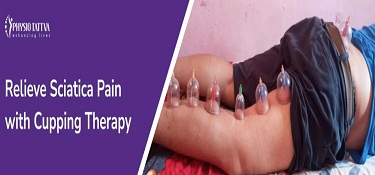Table of contents
Heat and Ice Therapy: Modulating Temperature
Cupping therapy for sciatic relief
Complementary Therapies: Holistic Treatments
Mindfulness and Relaxation Techniques: Stress reduction
Long-Term Management: Lifestyle Changes
Professional Consultation: Personalized Care
Introduction
Physical therapy, a stalwart of sciatica care, is focused on personalized exercises and stretching designed to strengthen the body’s core, increase flexibility, and alleviate pressure caused by sciatica. Controlled movements stabilize the spine and encourage proper alignment, reducing irritation of the sciatic nerve. Some target specific muscle groups, such as the piriformis, hamstring, and lower-back muscle groups, which may help release tension that accompanies the pain of sciatica. You absolutely must do these stretches correctly so you do not worsen your condition. Before trying any new stretches, consult a medical or physical medicine and rehabilitation provider.
Heat and Ice Therapy: Modulating Temperature

Using heat and cold therapies helps in sciatica pain management. Cold packs minimize inflammation and numb the affected area, whereas heat therapy relaxes tight muscles and increases blood circulation. Alternating hot and cold compresses tends to give the most well-rounded relief.
Cupping therapy for sciatic relief

Cupping therapy provides temporary sciatic relief by relieving discomfort, boosting circulation, and lowering inflammation. It might not treat underlying conditions, though, and should be included in a whole treatment strategy. Individual responses vary; therefore, regular sessions might be needed for ongoing advantages.
Complementary therapies: Holistic treatment

For pain relief, acupuncture, chiropractic adjustments, and massage therapy provide alternative methods.
Acupuncture: Acupuncture triggers certain points to give relief to pain and facilitate recovery. Insertion of hair-thin needles into the skin at specific points. Some studies suggest it is helpful for back pain, and others have found no advantage whatsoever. Get someone who knows what they are doing.
Chiropractic: Chiropractors use spinal adjustments or manipulations to restore spinal movement and reduce pain. Spinal manipulation seems to be effective and as safe as usual treatments.
Massage therapy: By using massage therapy, one can release muscle tension and enhance blood flow as well. Massages relieve sciatica by loosening tight muscles in the back and hips. Talk about these options with a health care provider to confirm that they fit well with your overall treatment plan.
Mindfulness and Relaxation Techniques for Stress Reduction

Yoga and meditation—also referred to as mindfulness practices—can reduce stress, promote relaxation, and alleviate chronic pain. These practices enable the body to respond to pain in a controlled and detached manner, encouraging well-being.
Long-Term Management: Lifestyle Changes:

Moreover, an ideal body weight with good posture and avoiding prolonged standing or sitting can also work towards prevention and chronic management. But ergonomic adjustments to your workspace and movement breaks can help ease pressure on the sciatic nerve.
Lifestyle Modifications

Severe lifestyle changes are helpful in preventing sciatica and reducing the symptoms. Here are some tips:
Regular Exercise: Regular exercise helps reduce the risk of sciatica by strengthening the muscles in the back and the legs.
Practice Good Posture: Good posture can help relieve pressure on the spine and alleviate symptoms.
Lift Properly: If you’re lifting heavy objects, bend at the knees and use your legs to lift things rather than your back.
Take Frequent Breaks: Take frequent breaks to stretch and move around to reduce the risk of sciatica.
Professional consultation: personalize care
Always seek guidance from a healthcare professional prior to commencing any treatment approach to sciatica. A complete assessment will determine the source of your pain and make certain that your treatment plan is specific to your physical condition and health history.
Conclusion
By incorporating expert-backed methods for good pain control, people with sciatica can reduce symptoms, increase mobility, and raise their general quality of life. Managing sciatica and encouraging long-term relief call for a thorough strategy combining physical therapy, lifestyle changes, and expert advice.


Leave a Reply